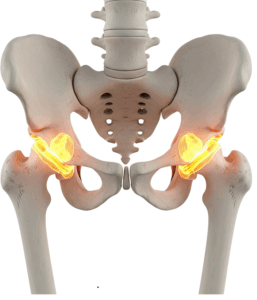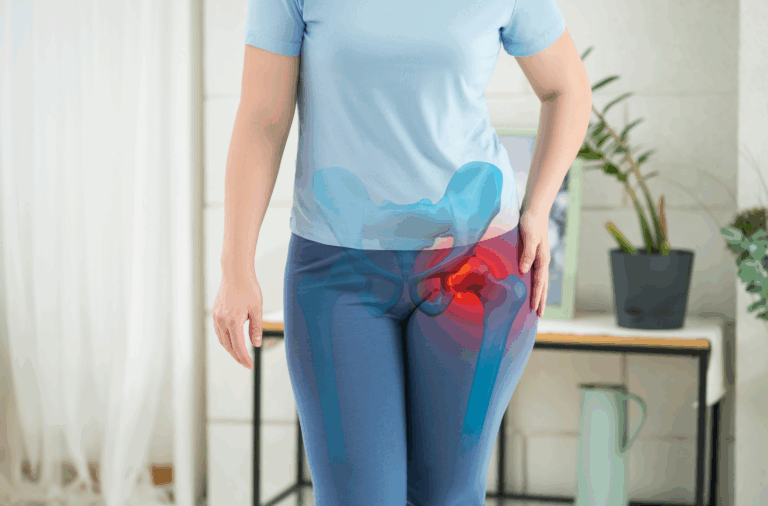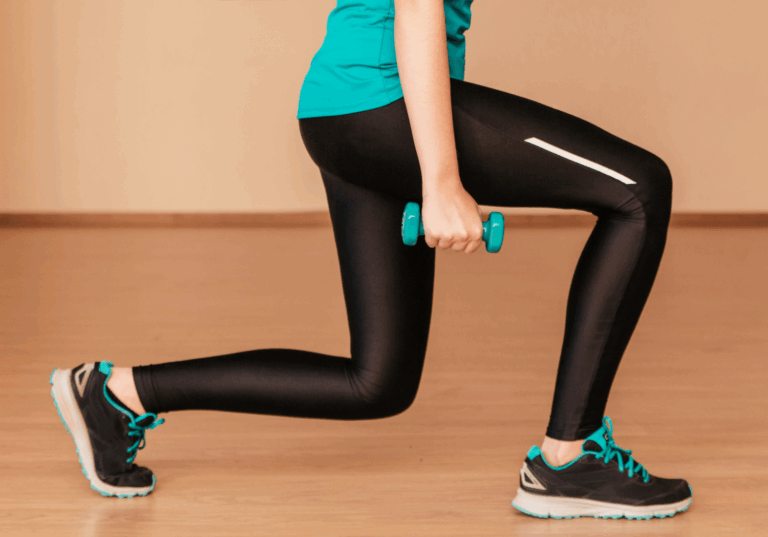Understanding Hip Osteoarthritis (OA)

Hip Osteoarthritis (OA) can develop at different ages, not only in later life. Some people can notice signs in their 30’s and 40’s, especially if you have had hip issues like dysplasia, Fermoro-Acetabular Impingement (FAI), Slipped Capital Femoral Epiphysis (SCFE), or participate in high-impact sports. Early intervention and the right care plan can help you stay active and protect your hip joints in the long run.
What Is Hip OA?
Hip OA affects the whole joint – bone, cartilage, labrum, and synovial lining. Causes of hip OA can include:
- Too much or too little activity and type of exercise performed
- Increased body weight/BMI
- Increased prevalence in females
- Genetics or family history
- Structural differences including hip dysplasia, FAI or SCFE.
How Hip OA presents / feels:
Typical symptoms include:
- Pain in the groin or side of the hip when walking
- Pain at rest or at night
- Morning stiffness
- Difficulty putting on shoes or socks or getting in/out of the car
- Hip clicking or catching
Red flags include history of cancer, infection, bowel changes, or steroid use – these should be checked by your GP / physiotherapist.

How a physio assesses Hip OA:
Your physio will discuss the history of your hip pain and carry out a full physical examination to include:
- Gait analysis – assessing how you walk / run.
- Range of motion of your hip joints and lumbar spine
- Strength of the muscles around the hip joints
- Functional movements like squatting, lunging, and bending and lifting.
MRI or X-ray imaging is not always required. If symptoms fit, we can diagnose clinically and start treatment ASAP.
Treatment: Exercise Is Key
Education and exercise are the key components of a good Hip OA treatment plan.
Exercises include strengthening, functional movements, stretching and core exercises.
- Strengthening: hip, hamstring, lumbar and quads exercises
- Functional: sit-to-stands, step-ups, lunges, squats
- Stretching: groin, glutes, hamstrings, lumbar spine
- Core: to enhance abdominal, spinal, and hip stability
Key Tips:
- Some discomfort during exercise is normal
- Pain does not always mean damage
- Medications or injections can help short-term but exercise is the best form of long-term treatment.

Hip OA in Women:
Women are more likely to experience hip OA due to a combination of factors;
- Coexisting conditions such as Gluteal tendinopathy (GTPS) or FAI
- Hormonal changes
- Reduced muscle mass post-menopause
- Helpful tips for this are visiting GP for hormonal changes, strength training and increasing your protein intake.
Key Takeaways
- Hip OA can affect younger adults – do not ignore persistent hip pain/symptoms
- Exercise, education, and strengthening are more important than X-ray’s or MRI scans.
- Early intervention improves function, reduces pain, and may delay or eliminate the need for surgery,
If you suffer from Hip Osteoarthritis, you can book in to see one of our experienced physios who will assess you and design a rehabilitation plan tailored to your needs.
You can book an appointment at our Blanchardstown Physiotherapy Clinic, our Castleknock Physiotherapy Clinic or our Old Bawn Physiotherapy clinic through our website www.somertonphysio.ie, email us at i[email protected] or call us on 01 9069566
Please do not hesitate to contact us if you have any questions.
You can follow us on our Facebook page and Instagram for more updates.
